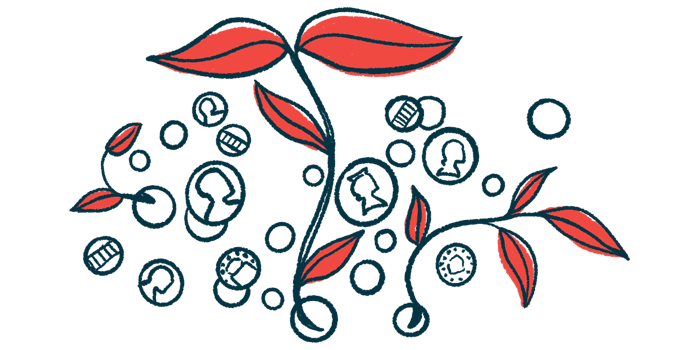Grant program supports research projects Down Under
Scientists who won BDSRA Australia's 2022 program will share funding
Written by |

The Batten Disease Support and Research Association (BDSRA) Australia has announced the three winners of its 2022 Batten Disease Research Grant Program in Australia and New Zealand.
Open annually since its inception in 2020, the program’s goal is to support local research that furthers the understanding of Batten disease mechanisms, advances therapeutic or diagnostic strategies, or improves care to boost life quality for people with the disease.
With the current round of funding, the association will give more than AU$120,000 (nearly $80,000) in total to support the three projects, which will be carried out this year.
“We are very proud to support this world-class research right here in the Australia/New Zealand region,” Ineka Whiteman, PhD, BDSRA Australia’s head of research and medical affairs, said in an association press release.
[further info on the projects also here; repeated link]
One of the awardees is Anthony Cook, PhD, an associate professor in the Wicking Dementia Research and Education Centre at the University of Tasmania, Australia, who also won the association’s research grant in 2020 and 2021.
Titled “Tackling the Genetic Heterogeneity of CLN3 disease,” the project will be a continuation of Cook’s efforts to understand the effects of different types of mutations in the CLN3 gene — the cause of juvenile Batten disease.
For many patients, there isn’t much data about how their particular mutation might lead to disease or influence its severity.
Cook’s team will use its award of AU$53,612 (about $35,640) to produce a number of lab-grown stem cell lines, each with a different CLN3 mutation known to cause juvenile Batten. These patient-derived cellular models then can be studied to better understand how the mutations influence disease expression.
These efforts are part of a larger project to understand how distinct CLN3 mutations affect the function of cells in the eyes and brain — the most commonly affected tissues in Batten. The stem cell lines also will be shared with other scientists, who can use them as a tool to study disease mechanisms and test potential treatment strategies.
The project will be co-funded by the Beyond Batten Disease Foundation.
Another project, “Ongoing gene therapy and peripheral pathology studies in ovine CLN5 and CLN6 Batten disease,” was awarded a total of AU$54,545 (about $36,260).
Led by Nadia Mitchell, PhD, of the Lincoln University’s Faculty of Agriculture and Life Sciences in New Zealand, researchers will use naturally-occurring sheep models of CLN5 and CLN6 Batten disease to examine the effects of the disease in tissue outside of the brain, or the periphery.
Mitchell, also a 2020 awardee, and her team previously developed a gene therapy for CLN5 disease that protected against neurological disease and vision loss in the sheep model.
Named NGN-101, the therapy now is being tested in the Neurogene-sponsored Phase 1/2 clinical trial called CLN5-200 (NCT05228145), that is recruiting children ages 3–9 years who have CLN5 disease, in the U.S. and U.K
With better treatments that could extend lifespan, it’s possible that new symptoms in peripheral tissues will become evident in Batten patients.
With the new project, the researchers aim to assess whether affected sheep develop peripheral symptoms and, if so, to characterize them. They also will evaluate whether brain- and eye-targeted treatments that prolong affected sheep’s lives will unmask peripheral symptoms that wouldn’t otherwise be seen.
The team also will look for potential biomarkers, which are lacking in Batten disease.
“Dr Mitchell and [associate professor] Cook’s projects aim to answer important questions in the translational research space, where basic science discoveries can be applied in large animal and human cell models,” Whiteman said. “This essential research will help bring us another step closer to trialing potential therapies in human patients.”
Studying speech, language
Lottie Morison, a speech pathologist at the Murdoch Children’s Research Institute and a PhD candidate at Melbourne University, in Australia, will receive AU$13,950 (about $9,270) for a project titled “Characterizing Speech and Language in Batten Disease.”
Speech and communication problems are implicated in all types of Batten, representing “some of the greatest challenges in the management and day-to-day life of affected children and their families,” said Amber Rundle, BDSRA Australia’s president.
The work will focus on characterizing these symptoms in people with CLN2 and CLN3 diseases, the two most common types of Batten. According to Morison, such a comprehensive characterization “has not been done before.”
“We believe these may be a valuable measure of disease progression and may serve as useful biomarkers for assessing the efficacy of precision medicine trials,” Morison added.
Parents and guardians of children with Batten in Australia or New Zealand who are interested in participating in this study can contact BDSRA Australia via email.
Since 2020, the research grant program has awarded more than AU$400,000 toward Batten disease research. The 2023 round of funding applications will open in May.






